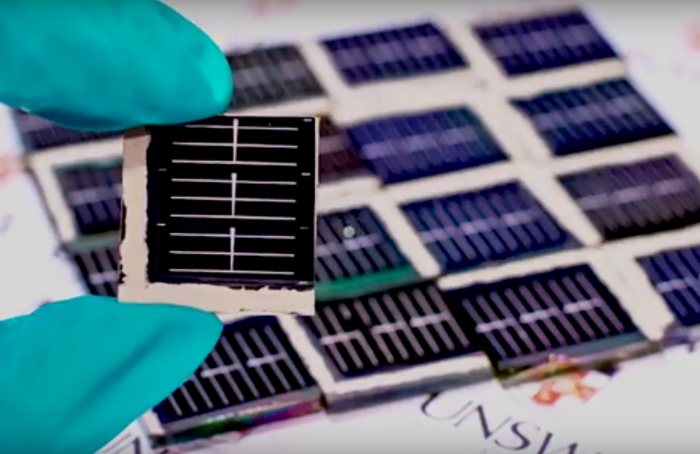
While CZTS solar cell technology may still not be ready for prime time, it’s getting closer thanks to the efforts of UNSW Sydney researchers.
CZTS stands for copper zinc tin sulfide, all elements that are abundant in the earth’s crust. The material, also known as sulfide kesterite, was first created back in the 1960’s, but it wasn’t until 1988 when it was shown to demonstrate the photovoltaic effect.
CZTS was seen a potential alternative to CIGS (copper indium gallium selenide) for commercial solar cells as it doesn’t require the use of rare earth elements. Indium, which makes up just 0.21 parts per million of the Earth’s crust, is expensive stuff. The average indium price for 2000 was USD $188 per kilogram. In March this year, it was $330-360 per kg.
Progress with CZTS has been slow – it wasn’t until 1997 that a CZTS solar cell with a conversion efficiency of just 2.3% was developed. 20 years later and efficiencies were still around 9% for a cell that didn’t also contain selenium.
That’s just changed – a UNSW research team lead by Scientia Fellow Dr Xiaojing (Jeana) Hao have broken the 10 per cent energy conversion efficiency barrier for sulfide kesterite and a kesterite solar cell, without the use of selenium. The achievement marks the fourth consecutive CTZS-related efficiency record set by the group in two years.
Among the other advantages of CZTS solar cells is manufacturing processes for CIGS can be easily adapted and as a thin-film, can be applied to flexible surfaces.
“The flexible PV cells are lightweight, extending their potential use for building integration and on other uneven surfaces such as cars or unmanned air vehicles (UAVs),” said Dr Hao.
It’s clear from listening to Dr. Hao that she is passionate about developing the technology.
“With CZTS, there are still so many things that we don’t know. Unravelling these unknowns is the most exciting adventure.”
The UNSW team’s results have been published in the journal Nature Energy
Dr Hao is also working on an Australian Renewable Energy Agency (ARENA) funded project targeting an efficiency of beyond 20% for CZTS solar cells containing selenium (CZTSSe). It’s an ambitious goal as the conversion efficiency of CZTSSe has been stagnant at 12.6% for years.
“One of the key outcomes targeted for the project is to make this low-cost, low-toxic and stable kesterite (CZTSSe) efficient enough for distributed PV market use (such as for BIPV, automotive and portable power sources),” states the ARENA project page.
ARENA has contributed $1.33m to the $4.56m project.

 RSS - Posts
RSS - Posts



Speak Your Mind